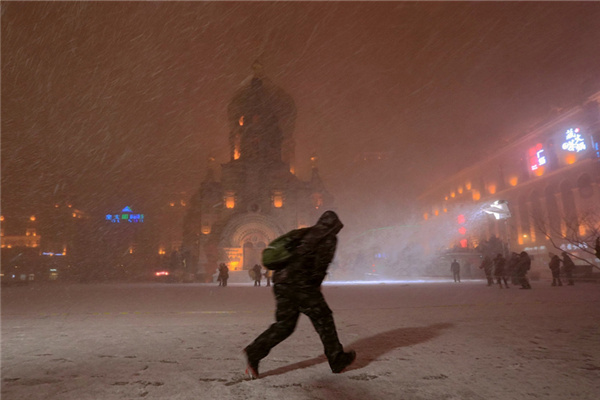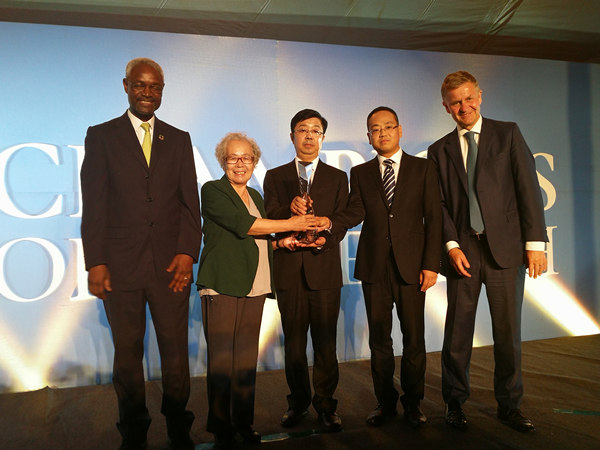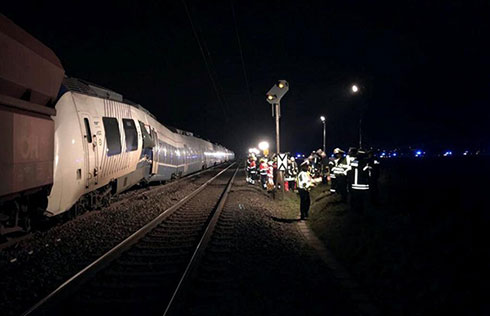

At a time when interest-rates are sinking toward zero around the world, the biggest currency traders are recommending countries that have the largest trade surpluses, led by Japan, Norway and Switzerland.
BNP Paribas SA, the best currency forecaster in a 2007 Bloomberg survey, says the yen will strengthen about 14 percent against the dollar by June. Goldman Sachs Group Inc. made Norway's krone one of its top 2009 picks, with possible gains of 17 percent versus the dollar. Bank of America Corp, the largest US lender by assets, says the Swiss franc will advance against every major currency.
The global economic crisis that forced central banks from the US to New Zealand to cut interest rates last year also reduced earnings from so-called carry trades by about half, according to data compiled by Bloomberg. Currencies of countries with trade surpluses are perceived as safer because governments don't have to brave credit markets in a year when sovereign bond sales are likely to exceed $3 trillion.
"The tide has turned," said Jens Nordvig, a senior currency strategist in New York at Goldman Sachs. "Surplus currencies such as the franc and the yen are likely to perform well, while the deficit countries are pretty vulnerable."
Switzerland's current-account surplus was 8 percent of gross domestic product last year, while Japan's was 3.8 percent and Norway's 16 percent, according to the Organization for Economic Cooperation and Development. That compares with deficits of 4.9 percent of GDP in the US, 5.1 percent in Australia and 9.5 percent in New Zealand.
Goldman index
Buying the currencies of nations with the six largest trade surpluses and selling those with deficits returned 4 percent this month, the most since October, according to Goldman Sachs' CA Outperformance index.
The same wager would have lost 5.9 percent in the six months through September, the index shows. Carry trades - where investors seek profits buying higher-yielding assets with money borrowed from low interest-rate countries - were the mainstay of the foreign-exchange market for six years until investors started unwinding the strategies in 2008 after central banks reduced borrowing costs as a global recession began.
The best carry trade within the Group of 10 economies is the 4.90 percentage-point difference between Japan's 0.10 percent key rate and the 5 percent rate set by the Reserve Bank of New Zealand. A year ago, the spread between the two rates was 7.75 percentage points.
Carry trades became less popular last year as volatility grew, increasing the risks that profits would be wiped out by sudden changes in exchange rates. Fluctuations among major currencies doubled to 19 percent since the end of 2007, according to data compiled by New York-based JPMorgan Chase & Co. In emerging markets, they tripled to 24 percent.
"Markets tend to pay more attention to fundamental valuations in times of high volatility and uncertainty," said Henrik Gullberg, a strategist in London at Deutsche Bank AG, the world's biggest foreign-exchange trader.
The Australian dollar weakened 4.2 percent against the US dollar this year, after a 20 percent slide in 2008. The yen is little changed, after appreciating 23 percent. The Swiss franc declined 5.4 percent against the dollar this year, compared with a 6.1 percent advance in 2008.
Franc rally
"Switzerland has a double-digit current-account surplus in a world where interest-rate differentials are less important," said David Powell, a currency analyst in London at Bank of America. "The franc will rally across the board."
The Swiss franc will rise 1 percent this year, according to the median of 34 estimates compiled by Bloomberg. The yen will end the year 8.2 percent weaker and the krone will advance 5.9 percent, separate surveys show. The Australian and New Zealand dollars will be little changed, Bloomberg surveys show.
Volatility increased because investors fled to the perceived safety of dollars as credit markets seized up following the collapse of Lehman Brothers Holdings Inc. in September and the US, Japan and Europe slid into recession. Banks posted more than $1 trillion in writedowns and losses since the start of 2007.
In the past month, a basket of high-yielding currencies including the Norwegian krone, the euro and the Australian and New Zealand dollars would have lost 14 percent against the yen on an annualized basis, according to data compiled by Bloomberg. The same wager lost 31 percent last year and gained 8.7 percent in 2007.
Global trade risk
Between 2002 and 2008, currencies of countries with current-account surpluses lagged behind those with deficits. Goldman Sachs' CA Outperformance index declined 40 percent in the five years through October 2007.
Betting on gains in so-called surplus currencies ignores the risk that global trade will nosedive, said Chirag Gandhi, a money manager of a $2.5 billion fund at the Investment Board of State of Wisconsin in Madison, Wisconsin, who cut his bets on gains in the yen. International trade will shrink in 2009 for the first time in more than 25 years, the Washington-based World Bank said in December.
The record $6 billion in bets that hedge funds and large speculators put on a yen rally created a "crowded trade," New York-based Merrill Lynch & Co. said in a Jan 6 report, citing Commodity Futures Trading Commission data. The yen strengthened 14 percent against the euro in the past three months and 12 percent versus the dollar.
Central bank risk
There's also the risk that central banks will take steps to prevent their currencies from strengthening. Japan Finance Minister Shoichi Nakagawa signaled last month policy makers were ready to intervene in foreign exchange market for the first time in four years. Thomas Jordan of the Swiss National Bank said Jan. 15 the central bank was watching foreign-exchange markets "very closely".
As investor appetite for risk returns "to more normal levels, you'll see yen selling," said Steven Englander, a currency strategist at Barclays Capital in New York. "You want to be prepared for the market sentiment to turn around."
Economies around the world are showing few signs of a rebound any time soon. Barclays predicts global economic growth of 0.8 percent this year, the slowest pace in more than half a century.
Buying currencies with surpluses "will gain more credibility as interest rates narrow," said Paresh Upadhyaya, who helps manage $50 billion in currency assets as a Putnam Investments senior vice president in Boston. "Relative economic performance will become important."
Rate cuts
Investors should buy the yen against the British pound, the Australian dollar and eastern European currencies such as the Hungarian forint and Polish zloty, Upadhyaya said.
The Reserve Bank of Australia reduced its main interest rate to 4.25 percent from 7.25 percent in August. The Bank of England cut borrowing costs to 1.5 percent from 5 percent in the period. Hungary, which received an emergency loan from the International Monetary Fund last year, cut rates half a percentage point yesterday to 9.5 percent.
Countries with trade deficits are preparing to borrow record sums to finance economic-stimulus programs. Euro-region nations will borrow about $1.1 trillion in 2009, according to Royal Bank of Scotland Group Plc. The US Treasury will borrow about $2 trillion this fiscal year ending Sept 30, compared with $892 billion in notes and bonds last year.
"It's about preservation of capital rather than return on capital," said Scott Ainsbury, who helps manage about $12 billion in currency in New York at FX Concepts Inc. and is buying the franc and the yen while selling the New Zealand dollar. "People who say the bottom is in are kidding themselves. What you see is people basically running away from risk."
Agencies
(China Daily 02/09/2009 page11)













